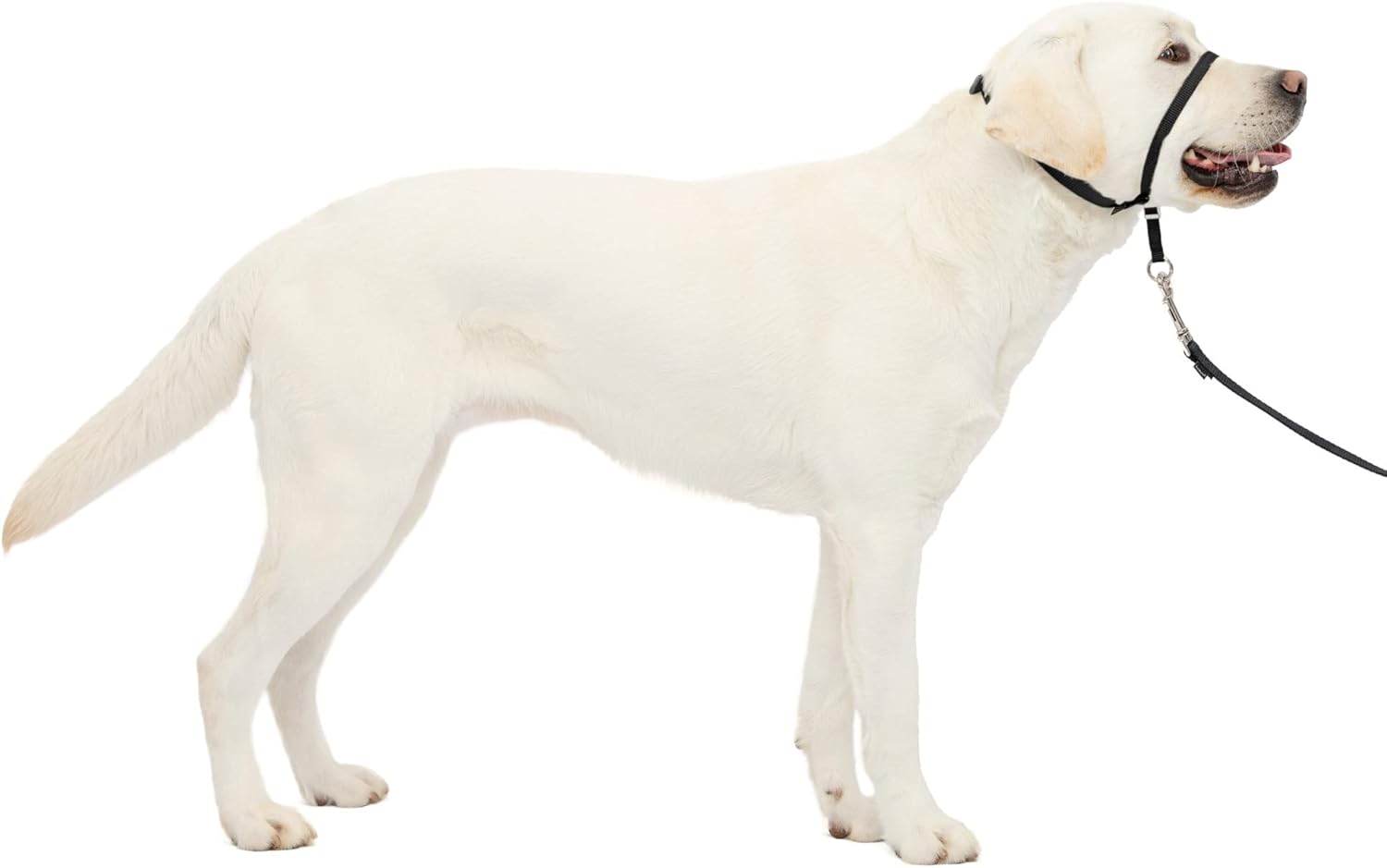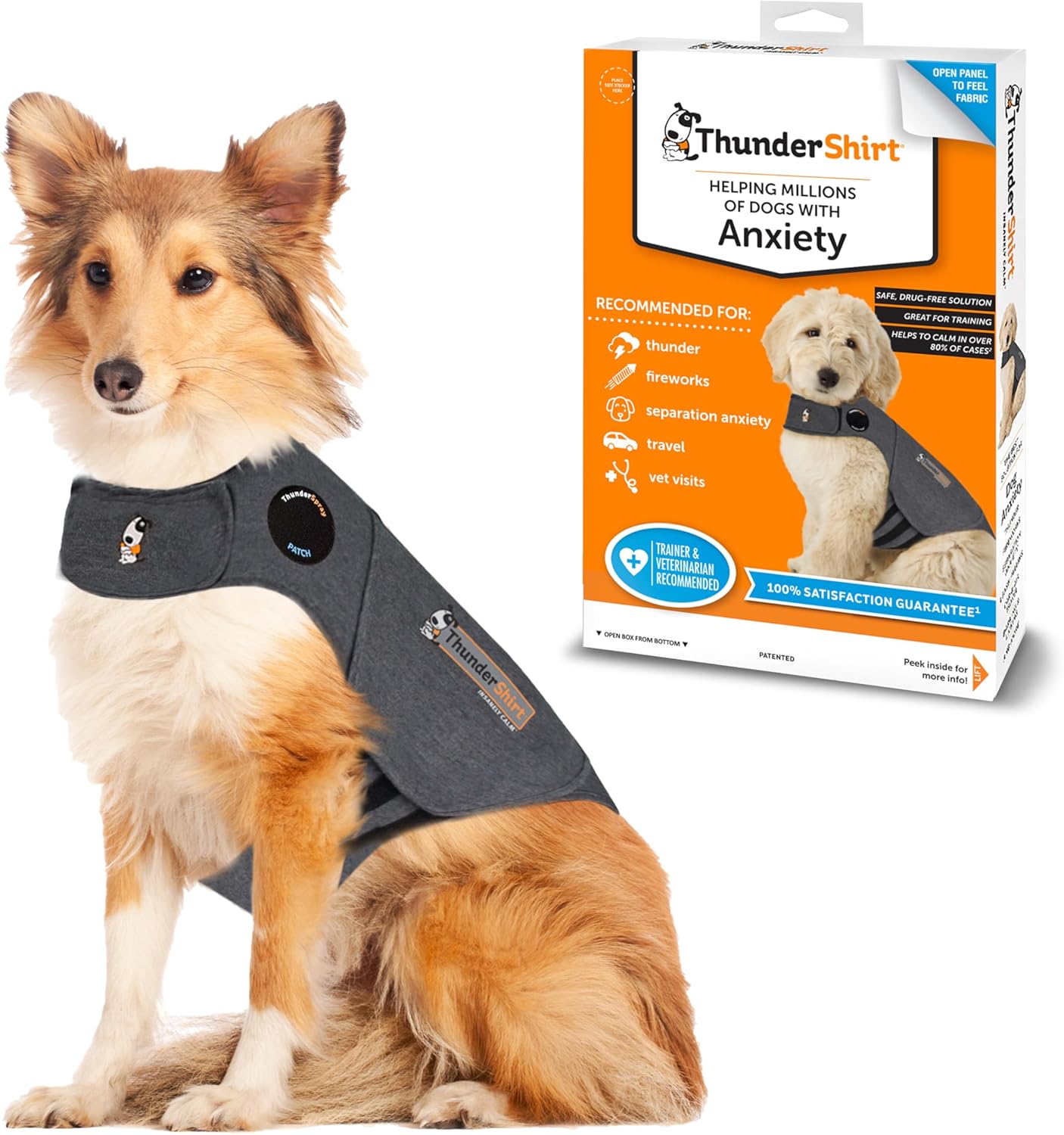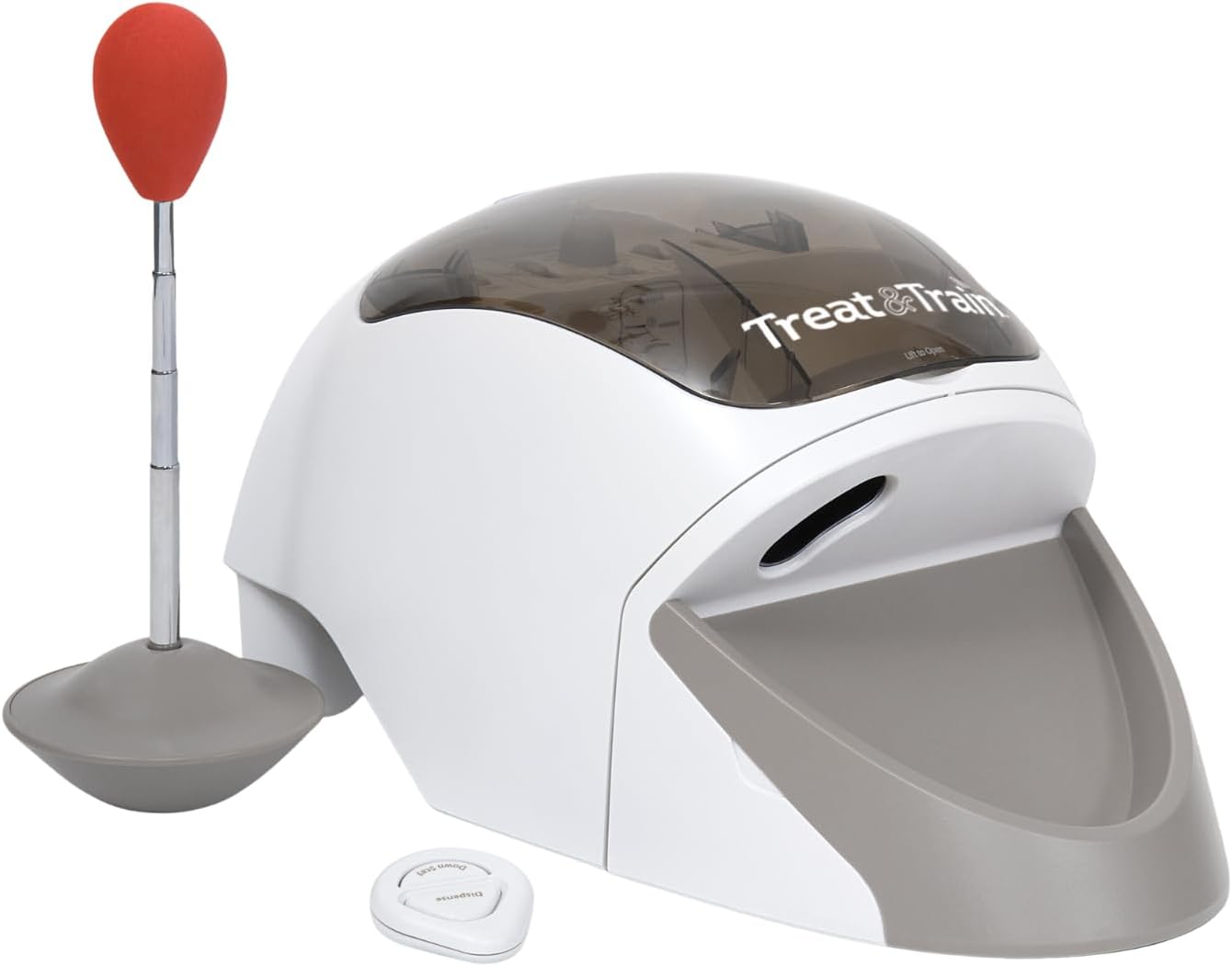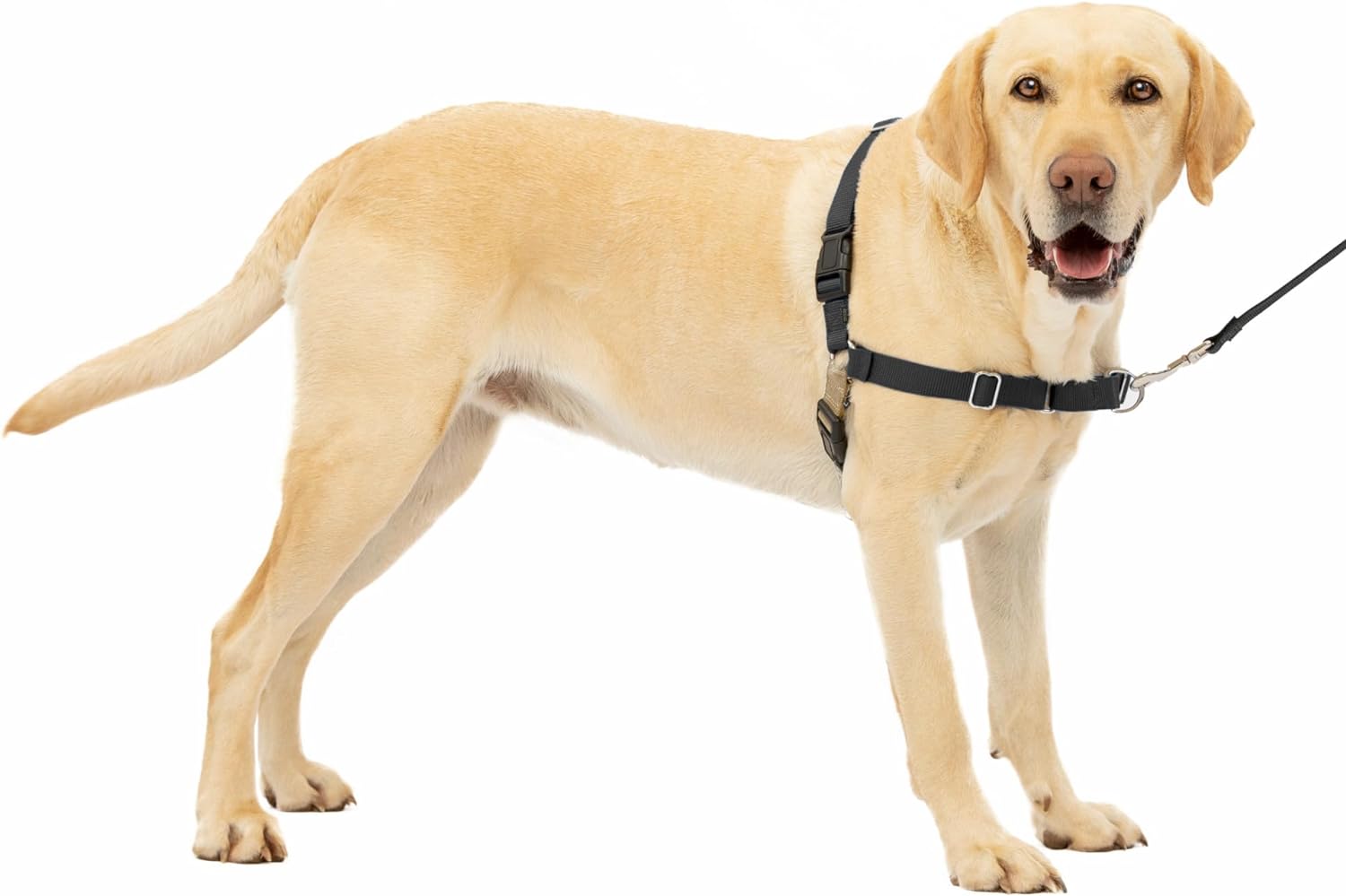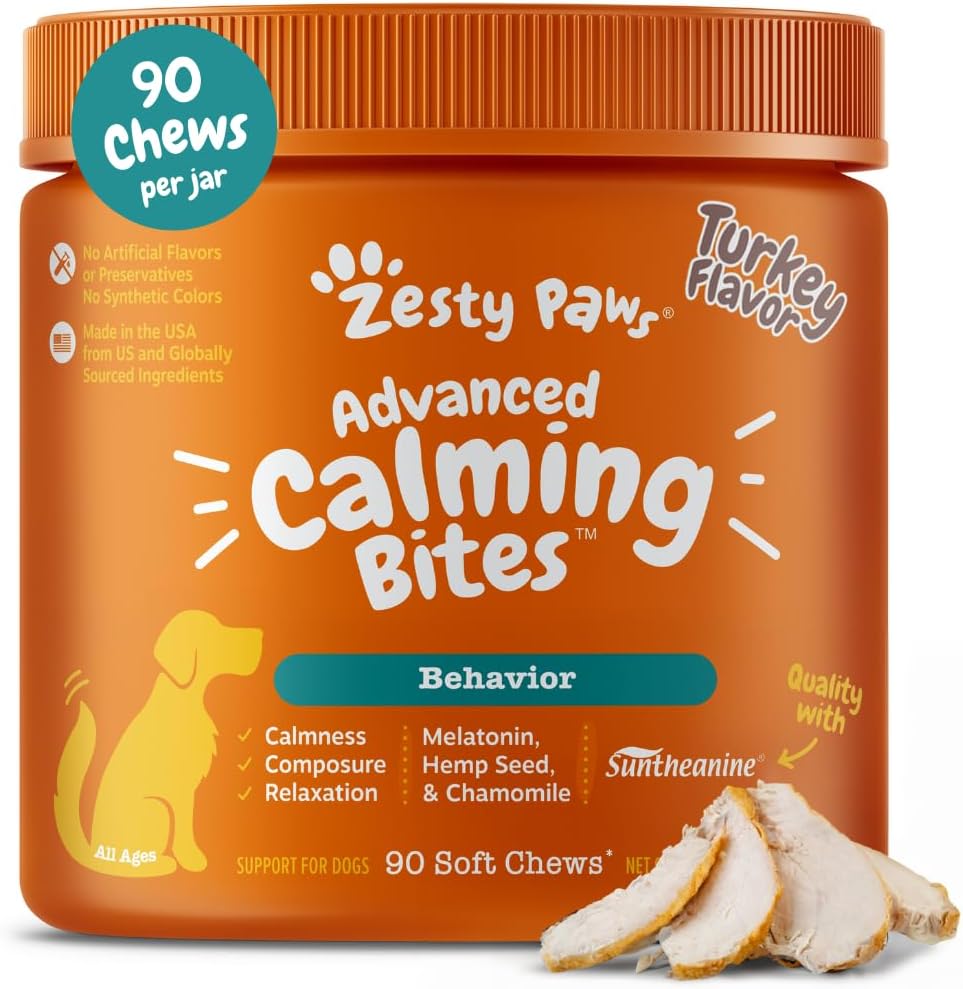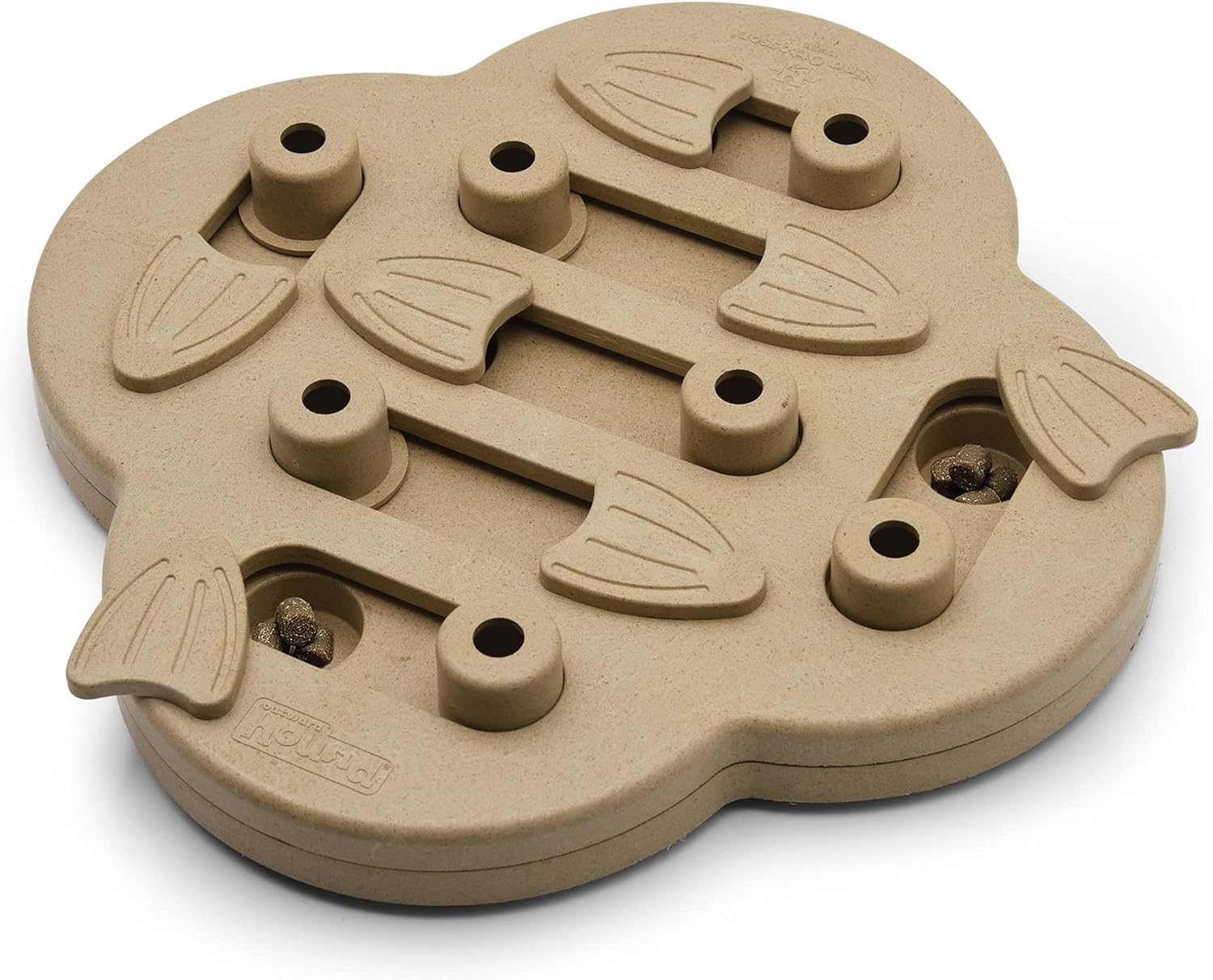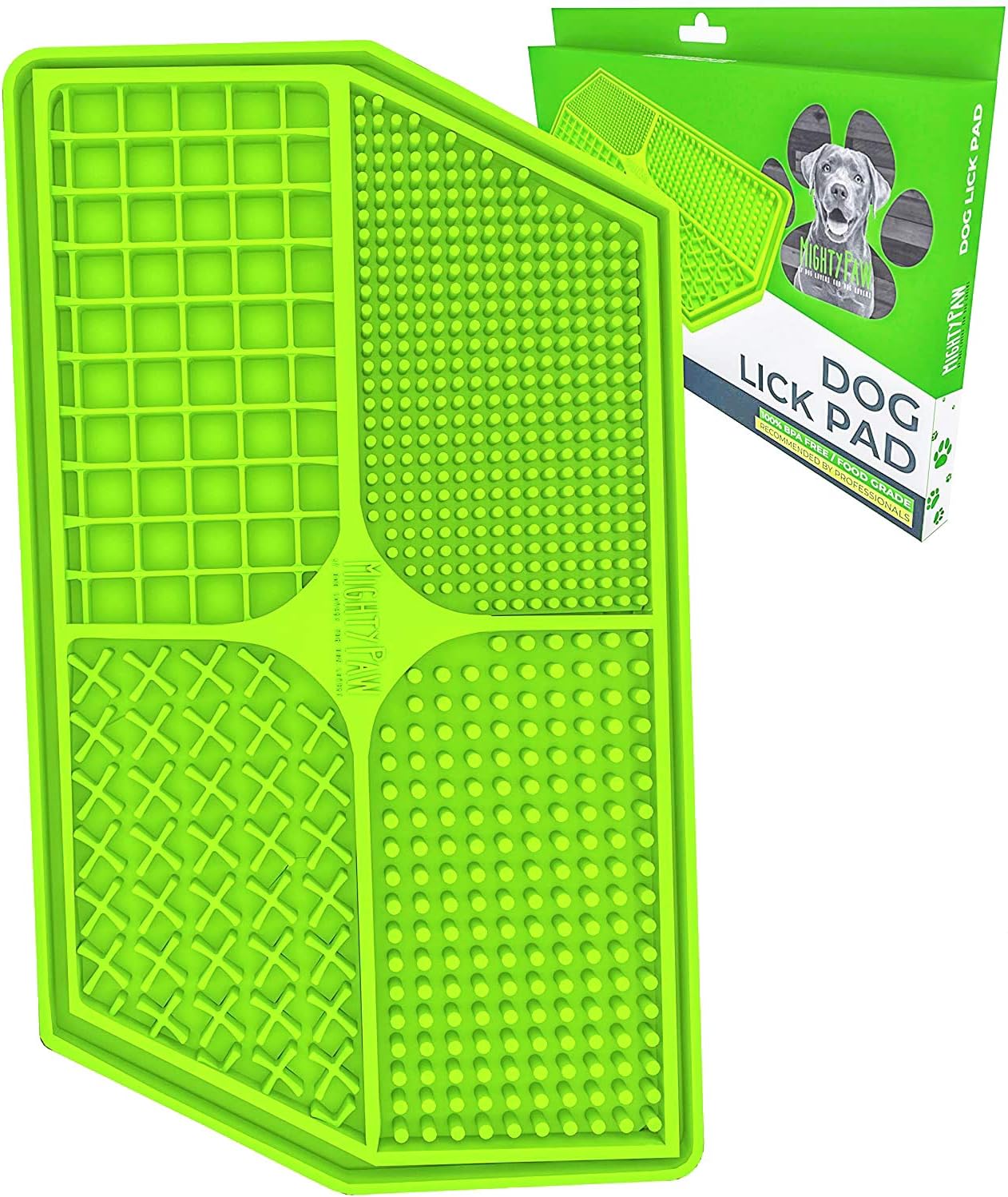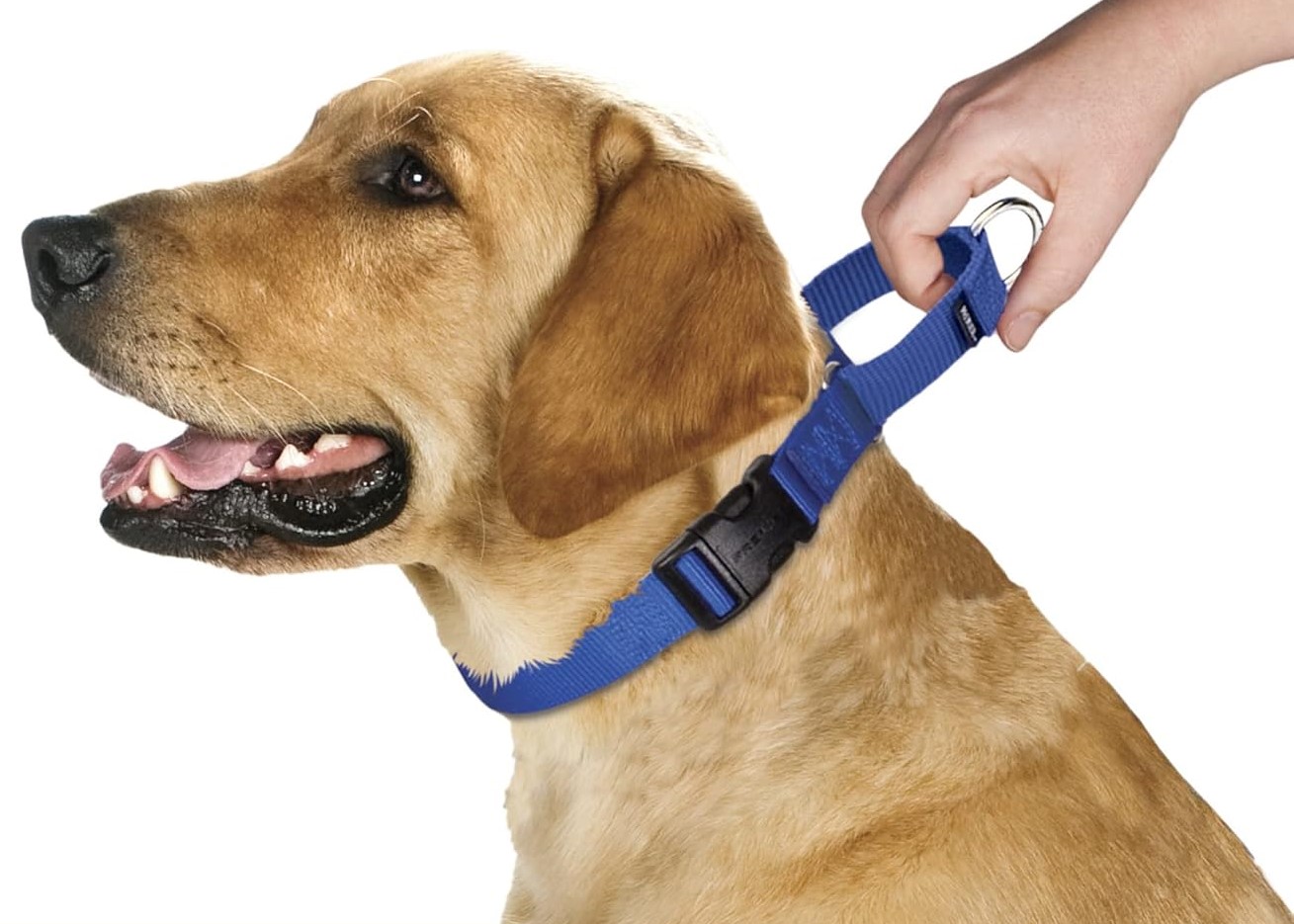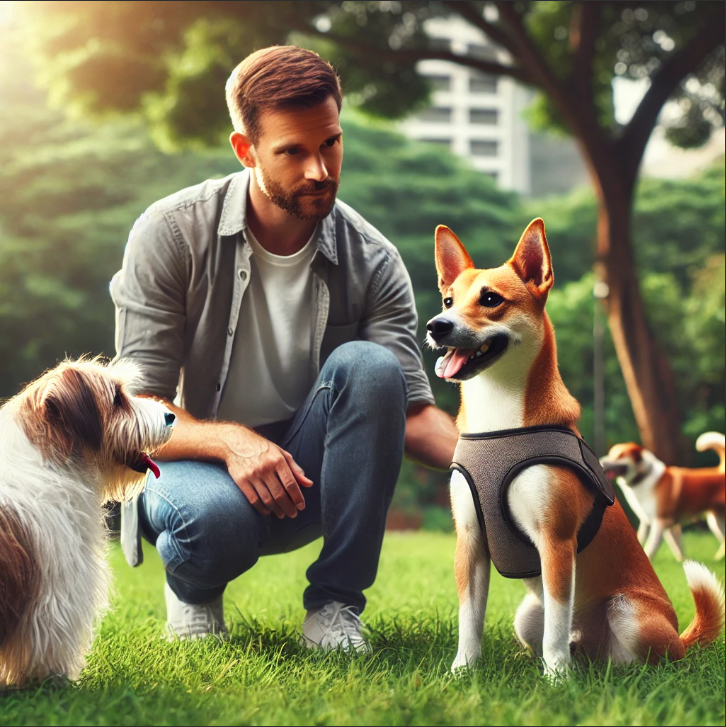 |
Key Points
|
| Socializing dogs is vital for their well-being and helps them feel comfortable in different situations. Proper techniques can manage and improve aggressive behavior, often from fear, lack of socialization, territorial instincts, or medical issues. Understanding these causes is essential to addressing and managing aggression effectively.
In this article, we explore safe and effective strategies to help aggressive dogs become more sociable and better integrated into their environments. |
|
Understanding Aggression in Dogs
Aggression in canines can manifest in various ways, including growling, snapping, biting, and more. Common reasons for aggression include fear, lack of socialization, territorial behavior, and medical issues. Understanding these causes is the first step in addressing and managing aggressive behavior.
Safety First
Safety is paramount when dealing with an aggressive dog. Ensure the safety of both the dog and the people involved by using a muzzle if necessary, keeping the dog on a leash, and avoiding high-stress situations initially.
Step-by-Step Socialization Process
1. Assess the Dog’s Aggression
- Observe and note what triggers the dog’s aggression.
- Consult with a veterinarian to rule out any clinical issues.
2. Professional Help
- Seek help from a professional dog trainer or behaviorist.
- Professional guidance can be immensely beneficial in addressing aggressive behavior.
3. Gradual Exposure
- Start with low-stress environments and gradually increase exposure to different stimuli.
- Introduce the dog to new people and animals slowly and in controlled settings.
4. Positive Reinforcement
- Use treats, praise, and rewards to reinforce good behavior.
- Avoid punishment, as it can increase aggression.
5. Socialization Exercises
- Walk in a quiet park, visit a pet-friendly store, or arrange controlled playdates with calm dogs.
- Handle the dog with patience and provide positive reinforcement during these exercises.
Managing Setbacks
Setbacks are normal during the socialization process. Stay calm and patient, and adjust the socialization plan as needed. Consistency and patience are key to making progress.
Consistency and Patience
Consistency in training and socialization efforts is crucial. Progress may be slow, but it is achievable with patience and persistence.
Commands and Actions for Managing Aggressive Dogs
| Command/Action | Purpose | How to Implement |
| Sit | Encourage calm behavior | Use a treat to lure the dog into a sitting position. Reward immediately when the dog sits. |
| Stay | Maintain control in potentially stressful situations | With the dog sitting, hold your hand out and say, “Stay.” Gradually increase the duration. |
| Leave It | Prevent aggression toward specific triggers | Hold a treat in your closed hand, say “Leave it,” and reward it with a different treat. |
| Focus/Watch Me | Redirect attention away from triggers | Hold a treat near your face and say, “Watch me.” Reward the dog when it makes eye contact. |
| Calm/Settle | Help the dog relax | Use a calming voice and pet the dog gently while saying “Calm” or “Settle.” Reward relaxed behavior. |
| Muzzle Training | Ensure safety during socialization | Introduce the muzzle slowly with treats, making it a positive experience. Use during high-risk situations. |
| Controlled Exposure | Gradually desensitize to triggers | Start with low-stress environments and gradually introduce the dog to more challenging situations. |
| Positive Reinforcement | Reward desired behaviors | Consistently use treats, praise, and affection to reward calm and non-aggressive behaviors. |
| Timeout/Break | Remove the dog from stressful situations | Calmly lead the dog away from the trigger and allow them to calm down before reintroducing. |
| Body Language Reading | Identify early signs of stress or aggression | Learn to recognize signs such as stiff body, growling, or raised hackles to intervene early. |
| Exercise/Play | Burn off excess energy and reduce stress | Provide regular physical and mental stimulation through walks, play, and interactive toys. |
| Professional Training | Address severe aggression with expert help | Work with a licensed canine coach or behaviorist for personalized guidance and training plans. |
| Routine and Consistency | Establish predictable patterns for the dog | Keep a regular schedule for feeding, walking, and training to provide a sense of security. |
| Gradual Socialization | Introduce new experiences slowly and safely | Expose the canine to new people, animals, and environments gradually, using positive reinforcement. |
| Avoid Punishment | Prevent exacerbating aggression | Use positive methods rather than punishment, which can increase fear and aggression. |
Signs of a Poorly Socialized Dog
| Sign | Description |
| Aggression | Displays of growling, snapping, or biting towards people or other animals. |
| Fearfulness | Exhibits excessive fear or anxiety in new situations or around unfamiliar people or animals. |
| Overly Protective | Guarding behavior towards their owner or territory, such as barking or lunging at perceived threats. |
| Lack of Self-Control | Difficulty calming down after being excited or aroused, leading to jumping, barking, or hyperactivity. |
| Avoidance Behavior | Hiding, cowering, or trying to escape when approached by people or animals. |
| Excessive Barking | Frequent and intense barking at strangers, other dogs, or unfamiliar noises. |
| Leash Reactivity | Lunging, barking, or growling when on a leash and encountering other dogs or people. |
| Poor Body Language | Stiff body posture raised hackles, or tucked tail in social situations. |
| Lack of Play Skills | Inability to play appropriately with other dogs, such as being too rough or not understanding play signals. |
| Resource Guarding | Aggressive behavior when approached while eating, chewing toys, or possessing other valued items. |
| Excessive Submission | Rolling over and exposing belly frequently, urinating when excited or scared. |
| Hypervigilance | Constantly scanning the environment, unable to relax or settle down. |
| Isolation | Preferring to be alone, avoiding interaction with people or other animals. |
| Fear of New Environments | Reluctance or refusal to enter new places, excessive nervousness in unfamiliar settings. |
| Inappropriate Greeting | Jumping up on people, nipping, or barking excessively when meeting new people or dogs. |
Aggressive Dog Breeds and Their Country of Origin
| Breed | Country of Origin | Pet-able/High Risk |
| American Pit Bull Terrier | United States | High Risk (Requires experienced owner) |
| Rottweiler | Germany | High Risk (Requires experienced owner) |
| German Shepherd | Germany | Pet-able (With proper training and socialization) |
| Doberman Pinscher | Germany | High Risk (Requires experienced owner) |
| Chow Chow | China | High Risk (Can be aloof and territorial) |
| Akita Inu | Japan | High Risk (Can be aloof and independent) |
| Bullmastiff | United Kingdom | High Risk (Requires experienced owner) |
| Cane Corso | Italy | High Risk (Requires experienced owner) |
| Alaskan Malamute | United States | Pet-able (Active and needs proper training) |
| Siberian Husky | Russia | Pet-able (Energetic, needs proper training) |
| Dogo Argentino | Argentina | High Risk (Requires experienced owner) |
| Perro de Presa Canario | Canary Islands (Spain) | High Risk (Requires experienced owner) |
| Belgian Malinois | Belgium | High Risk (Working breed, needs training) |
| Boxer | Germany | Pet-able (Friendly but needs training) |
| Great Dane | Germany | Pet-able (Gentle giant with proper training) |
How to Train an Aggressive Dog at Home
| Step | Description |
| 1. Assess the Aggression | Identify triggers and situations that cause aggressive behavior. Keep a journal to track patterns. |
| 2. Ensure Safety | Use a muzzle and a leash during training sessions to prevent accidents. Avoid risky situations. |
| 3. Consult a Professional | Seek guidance from a licensed canine coach or behaviorist to develop a tailored training plan. |
| 4. Use Positive Reinforcement | Reward calm and non-aggressive behavior with treats, praise, and affection. Avoid punishment. |
| 5. Establish a Routine | Maintain a consistent daily schedule for feeding, walks, and training sessions to provide stability. |
| 6. Teach Basic Commands | Train commands like “Sit,” “Stay,” “Leave it,” and “Come” using positive reinforcement techniques. |
| 7. Gradual Desensitization | Gradually expose the dog to its triggers in controlled, low-stress environments, rewarding calm behavior. |
| 8. Counter-Conditioning | Pair the presence of a trigger with something positive (e.g., treats) to change the dog’s emotional response. |
| 9. Use Focus Commands | Teach commands like “Watch me” to redirect the dog’s attention away from triggers. |
| 10. Manage the Environment | Reduce exposure to triggers by managing the dog’s environment (e.g., avoid crowded places). |
| 11. Exercise and Mental Stimulation | Provide regular physical exercise and intellectual stimulation via play, walks, and puzzle toys to decrease stress and extra energy. |
| 12. Socialization | Introduce the dog to new people, animals, and environments gradually, using positive reinforcement. |
| 13. Monitor Body Language | Learn to recognize signs of stress or aggression (e.g., stiff body, growling) so that you can intervene early. |
| 14. Stay Calm and Patient | Remain calm and patient during training, as dogs can sense and react to their owner’s emotions. |
| 15. Regular Check-Ins | Have regular check-ins with a professional to monitor progress and adjust the training plan as needed. |
Quick Tips for Encountering an Aggressive Dog
- Stay Calm: Avoid making surprising actions or loud noises. Remain as calm and still as possible.
- Avoid Eye Contact: Do not stare directly into the dog’s eyes, as it can be perceived as a threat.
- Stand Still: Stand still with your arms by your sides, and avoid running away. Dogs have an instinct to chase.
- Do Not Yell or Scream: Loud noises can further agitate the dog. If you need to say anything, speak softly and calmly.
- Use a Firm Voice: If you need to communicate, use a firm, calm voice to issue commands like “No” or “Stay.”
- Protect Yourself: If the dog attacks, try to place an object (like a bag or jacket) between you and the dog.
- Back Away Slowly: If the dog seems to lose interest, slowly back away without turning your back on the dog.
- Avoid Aggressive Posture: Do not raise your arms or appear threatening. Keep your hands low and avoid making yourself look bigger.
- Seek Higher Ground: If possible, move to a higher location where the dog cannot reach you.
- Use Distractions: If you have something to distract the dog (like a toy or another object), throw it away from you to divert the dog’s attention.
- Call for Help: If you are able to, call for help or alert someone nearby without making sudden movements.
- Report the Incident: After the encounter, report the aggressive dog to local animal control or authorities to prevent future incidents.
Do’s and Don’ts for Socializing a Dog with Other Dogs
| Do’s | Description |
| Do Start Early | Begin socialization as early as possible, ideally during puppyhood, to build positive experiences. |
| Do Use Positive Reinforcement | Reward your dog with treats, praise, and affection for calm and friendly behavior around other dogs. |
| Do Keep Initial Meetings Short | Start with short, positive interactions to avoid overwhelming your dog. |
| Do Choose Neutral Locations | Meet in neutral, controlled environments where neither dog feels territorial. |
| Do Watch Body Language | Monitor each dog’s physique language for signs and symptoms of stress or aggression and intervene early if needed. |
| Do Use Leashes Initially | Keep both dogs on leashes during initial introductions for better control and safety. |
| Do Arrange Playdates with Calm Dogs | Choose well-socialized, calm dogs for initial playdates to create positive experiences. |
| Do Take Breaks | Give your dog breaks if they seem overwhelmed, or try to prevent negative associations. |
| Do Be Patient | Understand that socialization is a gradual process, and progress may be slow. |
| Do Gradual Exposure | Slowly increase the level of exposure to other dogs, starting with a distance and gradually getting closer. |
| Do Consult Professionals | Seek advice from dog trainers or behaviorists if you encounter difficulties during the process. |
| Don’ts | Description |
| Don’t Force Interactions | Never force your dog to interact if they are showing signs of fear or aggression. |
| Don’t Use Punishment | Avoid using punishment or harsh corrections, as they can increase fear and aggression. |
| Don’t Introduce in Crowded Areas | Avoid busy dog parks or crowded areas for initial introductions to reduce stress. |
| Don’t Ignore Warning Signs | Pay attention to growling, stiff posture, or other signs of discomfort, and intervene promptly. |
| Don’t Overwhelm Your Dog | Limit the number of new dogs introduced at one time to prevent overwhelming your dog. |
| Don’t Rush the Process | Allow your dog to progress at their own pace, and don’t rush through the socialization stages. |
| Don’t Forget Regular Training | Continue basic obedience training to ensure your dog remains responsive and under control. |
| Don’t Allow Unsupervised Play | Always supervise interactions to prevent and manage potential conflicts. |
| Don’t Ignore Your Dog’s Needs | Ensure your dog’s physical and emotional needs are met, including exercise, rest, and mental stimulation. |
| Don’t Assume All Dogs Are Friendly | Remember that not all dogs are well-socialized; proceed with caution during introductions. |
Essential Tools to Support the Socialization and Training of an Aggressive Dog
Conclusion
Socializing an aggressive dog is a challenging yet rewarding endeavor. Understanding the roots of aggressive behavior, prioritizing safety, and following a structured socialization plan can help your dog become more sociable and well-adjusted. Remember, patience, consistency, and wonderful reinforcement are key to success. Seek expert assistance when you want to, and continue to be dedicated to your dog’s progress. Many dogs can overcome aggressive tendencies with the right approach, creating a happier and safer environment for both the dog and their human companions.
Additional Resources
- Books: “The Other End of the Leash” by Patricia McConnell, “Behavior Adjustment Training” by Grisha Stewart
- Websites: American Kennel Club, ASPCA, Dog Trainers and Behaviorists directories
- Professional Trainers: Contact local certified dog trainers or behaviorists for personalized guidance
- Support Groups: Join online forums and local support groups for advice and shared experiences with other dog owners.
Call to Action
If you have experience socializing an aggressive dog or have questions about the process, please share your stories and inquiries in the comments below. Your insights could help others facing similar challenges. Feel free to share this article with others who might benefit from these tips and guidelines.


